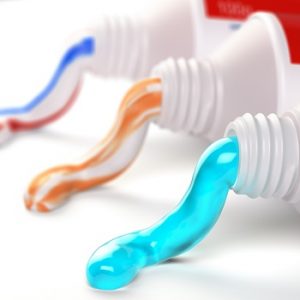
More evidence that low-calorie sweeteners are bad for your health
Studies show that artificial sweeteners can raise the risk of hypertension, metabolic syndrome, type 2 diabetes and heart disease, including stroke.

Natural Health News — Girls exposed to chemicals commonly found in toothpaste, makeup, soap and other personal care products before birth may hit puberty earlier, according to new research from the US.
The researchers note that a number of chemicals can interfere with natural hormones in our bodies and have been linked to early puberty in animal studies including phthalates, which are often found in scented products like perfumes, soaps and shampoos; parabens, which are used as preservatives in cosmetics; and phenols, which include triclosan, which the FDA banned from use in hand soap in 2017 because it was shown to be ineffective, but which is still used in some toothpastes..
While decades of research suggests studies have shown that girls and possibly boys have been experiencing puberty at progressively younger ages the link with everyday chemicals is not well studied in human children. This is troubling because earlier age at puberty has been linked with increased risk of mental illness, breast and ovarian cancer in girls and testicular cancer in boys.
“We know that some of the things we put on our bodies are getting into our bodies, either because they pass through the skin or we breathe them in or we inadvertently ingest them,” said Kim Harley, an associate adjunct professor in the School of Public Health, University of Berkley. “We wanted to know what effect exposure to these chemicals has during certain critical windows of development, which include before birth and during puberty.”
The study, published in the journal Human Reproduction, used data collected as part of the Center for the Health Assessment of Mothers and Children of Salinas (CHAMACOS) study, which followed 338 children from before birth to adolescence to document how early environmental exposures affect childhood development.
The CHAMACOS study recruited pregnant women living in the farm-working, primarily Latino communities of Central California’s Salinas Valley between 1999 and 2000. While the primary aim of the study was to examine the impact of pesticide exposure on childhood development, the researchers used the opportunity to examine the effects of other chemicals as well.
Shifting developmental milestones
The team measured concentrations of phthalates, parabens and phenols in urine samples taken from mothers twice during pregnancy, and from children at the age of 9. They then followed the growth of the children – 159 boys and 179 girls – between the ages of 9 and 13 to track the timing of developmental milestones marking different stages of puberty.
The vast majority – more than 90% – of urine samples of both mothers and children showed detectable concentrations of all three classes of chemicals, with the exception of triclosan which was present in approximately 70% of samples.
The researchers found that every time the concentrations of diethyl phthalate and triclosan in the mother’s urine doubled, the timing of developmental milestones in girls shifted approximately one month earlier. Girls who had higher concentrations of parabens in their urine at age 9 also experienced puberty at younger ages. However, it is unclear if the chemicals were causing the shift, or if girls who reached puberty earlier were more likely to start using personal care products at younger ages, Harley said.
“While more research is needed, people should be aware that there are chemicals in personal care products that may be disrupting the hormones in our bodies,” Harley said.
Consumers who are concerned about chemicals in personal care products can take practical steps to limit their exposure, Harley said.
“There has been increasing awareness of chemicals in personal care products and consumer demand for products with lower levels of chemicals,” Harley said. “Resources like the Environmental Working Group’s Skin Deep database or the Think Dirty App can help savvy consumers reduce their exposure.”

Please subscribe me to your newsletter mailing list. I have read the
privacy statement